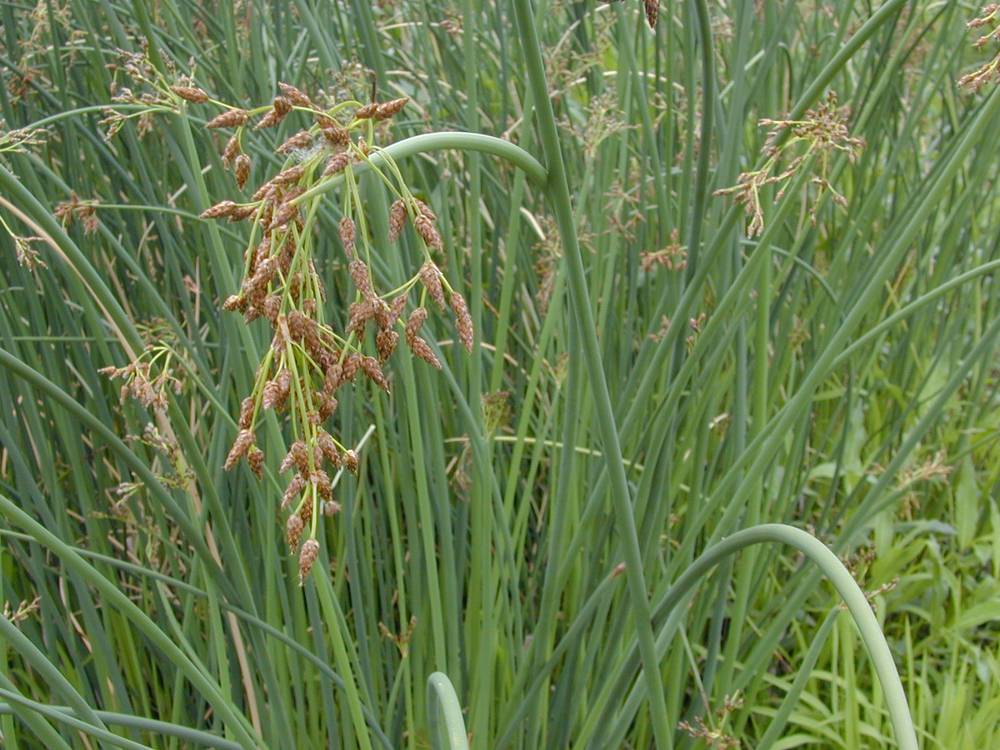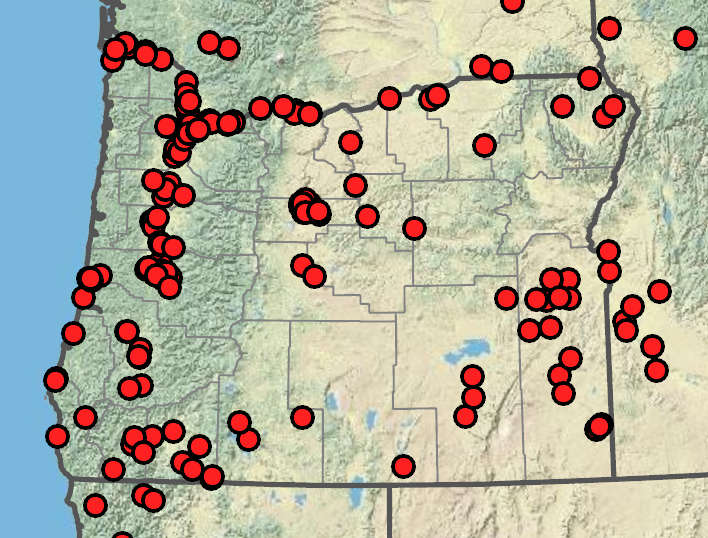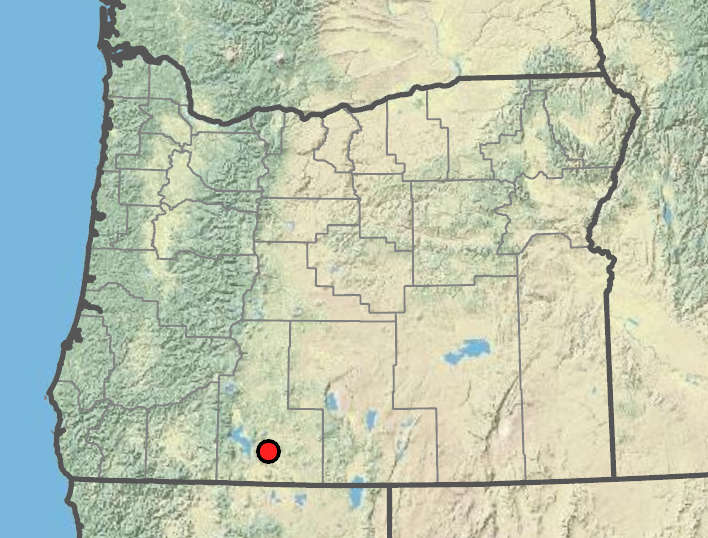Schoenoplectus tabernaemontani
Schoenoplectus heterochaetus
soft-stem bulrush, tule
pale great bulrush, slender bulrush
3–10 mm thick.
5–8 mm thick; tubers absent.
cylindric, 50–300 cm × 2–10 mm.
cylindric, 150–250 cm × 4–8 mm.
thin; C-shaped to dorsiventrally flat in cross section; much shorter to longer than sheath;
distal blade to 220 × 5 mm.
C-shaped to dorsiventrally flat in cross section, usually much shorter than sheath;
distal blade 2–200 × 1–4 mm;
margins often scabridulous.
proximal bract usually erect, thickly C-shaped to subterete, 1–8 cm.
proximal bract usually erect, thickly C-shaped to subterete in cross section, 1–15 cm.
15–200; solitary or less often in clusters of 2–4(7); clusters on branches to 15(25) cm long;
spikes 3–17 × 2.5–4 mm; floral scales ovate, 2–3.5 × 1.5–2 mm, uniformly dark to pale orange-brown, sometimes straw-colored, sometimes with prominent linear dots;
midrib often pale or green, sparsely (rarely densely) reddish or straw-colored scabrous on awn and distal parts of midrib and sometimes flanks;
margins ciliate;
hairs contorted;
apex obtuse to rounded; notch 0.2–0.3 mm deep; awn straight or bent, 0.2–0.8 mm.
5–30; solitary or rarely 2 together; on stalks to 9 cm, 5–15 × 3–4 mm; floral scales light orange-brown to nearly colorless, usually with faint linear dots; midribs ovate-oblong, 3–4 × 1.5 mm, often greenish; sparse reddish or straw-colored scabrous on awn, sometimes distal midrib; and rarely adjacent parts of sides;
margins ciliate;
hairs contorted;
apex obtuse; notch 0.5 mm deep; awn straight to slightly contorted, 0.3–1 mm.
perianth bristles 6; more or less equaling achene, densely retrorsely spinulose, brown;
stigmas 2, sometimes 3 near spike apex.
perianth members 4(5); bristle-like, equaling achene body or 2 of them much shorter, sparsely retrorsely spinulose, brown;
stigmas 3.
plano-convex, 1.5–2.8 × 1.2–1.7 mm;
beak 0.2–0.4 mm.
compressed-trigonous, 2.2–3.2 × 1.4–1.9 mm;
beak 0.3–1 mm.
=42.
=38.
Schoenoplectus tabernaemontani
Schoenoplectus heterochaetus
Freshwater to brackish marshes, bogs, lakes, stream banks, and disturbed wetlands, often emergent in shallow water. 0–1600 m. Throughout Oregon. CA, ID, NV, WA; throughout North America; southern South America; Africa, Australia, Eurasia, New Zealand, Pacific Islands. Native.
Schoenoplectus tabernaemontani is a cosmopolitan, variable taxon. North American populations have sometimes been treated as S. validus. Schoenoplectus acutus, also common in Oregon, is very similar. Schoenoplectus tabernaemontani hybridizes with S. acutus, S. californicus S. glaucus, S. heterochaetus, and S. triqueter. Hybrids tend to be fertile. Yellow-striped forms of S. tabernaemontani are cultivated as ornamentals.
Freshwater marshes and lakes, often emergent in shallow water. 1000–1500 m. ECas. CA, ID; northeast to Alberta, east to MA, south to WY, TX, KY, and NY. Native.
This species hybridizes with S. acutus and S. tabernaemontani.
Barbara Wilson, Richard Brainerd, Nick Otting
Barbara Wilson, Richard Brainerd, Nick Otting
- Local floras:
BC,
CA,
OR,
WA
- Local Web sites:
CalFlora,
CalPhotos,
Flora NW,
PNW Herbaria
WildflowerSearch
iNaturalist (observations)
USDA Plants Database
- LBJ Wildflower Center
- SEINet
- Plants of the World Online
- Encyclopedia of Life
- Wikipedia
- Google Image Search
- Local floras:
CA,
OR,
WA
- Local Web sites:
CalFlora,
CalPhotos,
Flora NW,
PNW Herbaria
WildflowerSearch
iNaturalist (observations)
USDA Plants Database
- LBJ Wildflower Center
- SEINet
- Plants of the World Online
- Encyclopedia of Life
- Wikipedia
- Google Image Search




